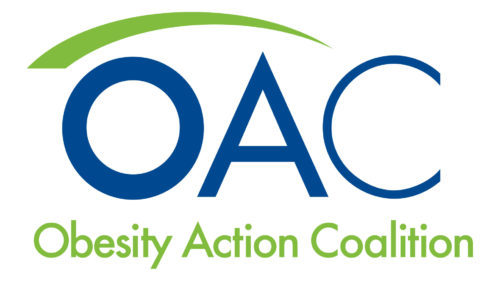Obesity is a complex medical condition involving an excessive amount of body fat and according to the National Institute of Health, obesity is the state of having a Body Mass Index of 30 and above.
The different types of obesity, based on BMI, according to Medline Plus:
- Class 1 (low-risk) obesity, if BMI is 30.0 to 34.9
- Class 2 (moderate-risk) obesity, if BMI is 35.0 to 39.9
- Class 3 (high-risk) obesity, if BMI is equal to or greater than 40.0
What is the prevalence of obesity?
Globally, there are now more people who are obese than those who are underweight, a trend observed in every region over the world except parts of sub-Saharan Africa and Asia. According to WHO estimates, more than 1.9 billion adults aged 18 years and older are overweight and over 650 million adults are obese.
What causes obesity?
Eating too much and moving too little are the main causes of obesity. If you consume high amounts of energy, especially sugars and fat but do not burn them off via exercise and physical activity, the surplus energy gets stored in the body as fat and causes obesity.
Poor diet and below-mentioned lifestyle choices could lead to obesity:
- high sugar and fat consumption,
- drinking too much alcohol,
- eating out a lot,
- consuming larger portions than you need,
- comfort eating and
- drinking too many sugary drinks
What are the risk factors of obesity?
There are many risk factors for overweight and obesity. Some risk factors can be changed, such as unhealthy lifestyle habits and environments. Other risk factors, such as age, family history and genetics, race and ethnicity, and sex, cannot be changed
- Unhealthy lifestyle habits such as lack of physical activity, unhealthy eating behaviors, not getting enough sleep and going through a high amount of stress
- Childhood obesity
- Unhealthy environments including exposure to obesogens (chemicals that affect hormones and increase fatty tissues in the body), having easy access to unhealthy food and social factors such as low socioeconomic status or unhealthy environment
- Family history and genetics
- Ethnicity- obesity is highly prevalent in blacks compared to Hispanics.
How is obesity diagnosed?
Your doctor may diagnose overweight and obesity based on your medical history, physical exams that confirm you have a high body mass index (BMI) and possibly a high waist circumference, and tests to rule out other medical conditions.
What are the complications of obesity?
Obese individuals are at a higher chance of developing health conditions including diabetes, hypertension, high blood cholesterol and triglycerides, coronary heart attacks, heart failure, stroke, some cancers, sleep apnea, gallstones, liver problems, and osteoarthritis.
TREATING OBESITY
Depending on the cause and severity of your condition, possible treatments including healthy lifestyle changes, behavioral weight-loss programs, weight loss medications and in severe cases, surgery is recommended.
Healthy lifestyle changes:This includes heart-healthy eating, eating the right amount of calories that help maintain healthy body weight, indulging in regular physical activity, having a healthy sleeping habit.
Behavioral weight-loss programsYour doctor may recommend you enroll in individual or group behavioral weight-loss programs to treat your overweight and obesity. In these programs, a trained healthcare professional will customize a weight-loss plan for you. This plan will include a moderately-reduced calorie diet, physical activity goals, and behavioral strategies to help you make and maintain these lifestyle changes
Weight loss medicationsWHen healthy lifestyle modifications might not be enough, your doctor might prescribe certain medicines that treat overweight and obesity, which are FDA-approved. The FDA has approved five of these drugs—orlistat (Xenical, Alli), lorcaserin (Belviq), phentermine-topiramate (Qsymia), naltrexone-bupropion (Contrave), and liraglutide (Saxenda)—for long-term use.
Surgical procedures:When lifestyle modifications or medicines don’t work at all, surgical procedures like the following might be recommended.
- Gastric bypass surgery. A small part of the stomach is connected to the middle part of the intestine, bypassing the first part of the intestine. This decreases the amount of food that you can eat and the amount of fat your body can take in and store.
- Gastrectomy. A big portion of the stomach is removed to decrease the amount of food that you can eat.
- Gastric banding. A hollow band is placed around the upper part of the stomach creating a smaller stomach. This decreases the amount of food you can eat.
The Maestro system- an implantable weight reduction device
The Maestro Rechargeable System is a weight-loss treatment for morbidly obese or obese individuals who are diagnosed with one or more obesity-related conditions. It contains some components that are implanted inside the body and some that are outside the body. The internal components include a rechargeable pulse generator (also called a neuroregulator disc) which delivers electrical signals to nerve electrodes. The electrodes are placed on the trunks of the vagus nerve in the abdomen and two electrical leads connect the electrodes to the pulse generator. The external components include a transmit coil, mobile charger, and clinician programmer. The vagus nerve is involved in regulating stomach emptying and signaling to the brain that the stomach feels empty or full. The precise mechanism of weight loss related to the use of the device is not clear. This device is intended for obese individuals above 18 years old with a BMI of 40 to 45 or with a BMI of 35 to 39.9 and one or more obesity-related health conditions such as high blood pressure or high cholesterol. The Maestro Rechargeable System is for use in obese patients who have first tried to lose weight by diet and exercise in a supervised program within the last 5 years.
Endoscopic Treatment for ObesityThe endoscopic approach may have the potential for less invasive intervention in obesity treatment, with appropriate weight loss, reduced morbidity, and easy access for obese patients. As minimally invasive therapy, endoscopic bariatric treatment can have several advantages over current therapies. It can be performed through a simple endoscopic procedure and can be reversible through the use of an intragastric balloon, suture technique, endoluminal malabsorptive device, or aspiration therapy. The various endoscopic bariatric procedures differ in their mechanisms of effect and have various degrees of strength, persistence, and reversibility. Therefore, endoscopic bariatric therapy could play a diverse role in obesity treatment according to the degree of obesity, and evaluation for its use can be based on the overall risk-benefit ratio. Intragastric balloons and suturing methods employ space-occupying and volume restriction mechanisms. Intragastric balloons were designed to be retained for 6 months within the stomach before their elimination, and balloon placement was associated with a significantly reduced food intake in obese patients. Suturing techniques, such as endoluminal vertical gastroplasty, transoral gastroplasty, and a transoral endoscopic restrictive implant system, were developed as endoscopic skills evolved, and showed good outcomes in preliminary research. With these methods, there were no serious adverse events; however, body weight was regained following balloon removal, and inadequate durability of sutures should be considered. In addition, suturing methods are problematic for gastric cancer screening after the procedure, require high endoscopic skills and time, and are still in the early stages of development.
Engineered ingestible molecular traps created from mesoporous silica particles (MSPs)
There haven’t been any effective treatments for obesity that hinder weight gain or promote weight loss without problematic side effects. Many of the current medications use small pharmacological agents that can affect the body negatively in multiple ways. The researchers at the Department of Molecular Biosciences, The Wenner-Gren Institute, Stockholm University chose an innovative alternative approach. Mesoporous silica particles (MSP) are a type of ingestible synthetic silica particles that can be produced with a large surface area and a range of pore sizes. The team hypothesized that the particles could be used as "molecular sieves" in the intestine to trap and block digestive enzymes that break down food and thus reduce the energy uptake into the body (measured as food efficiency). They fed the mice models with high fat, high calorific diets, to induce weight gain, mixed with specially engineered MSPs. The findings revealed that MSPs reduced food efficiency by 33 percent leading to a lower weight gain, and a positive effect on the metabolic profile, as well as significantly lower levels of adipose tissue formation and leptin, together with lower levels of circulating insulin. The data presented in this study suggest that tailored MSPs could be used to treat obesity and diabetes in humans, especially when taking into account their excellent safety profiles. Clinical trials have been devised and are now underway.
Gene therapyTo overcome the side effects of current anti-obesity drugs, researchers Jee Young Chung and colleagues developed a specific gene silencing therapy against a fatty acid metabolism gene, Fabp4. They used a CRISPR interference system wherein catalytically dead Cas9 protein and single-guide RNA was targeted to white adipocytes with a tissue-specific fusion peptide. The complex is internalized with little toxicity to the cells and upon internalization, the molecule complex decreases the expression of Fabp4 and reduces lipid storage in adipocytes. Demonstrating that this delivery method performed well in cells, Chung and colleagues tested their therapy on obese mice. Mice were fed a diet high in fat leading to obesity and insulin resistance. Fabp4 repression resulted in a 20% reduction in body weight and improved insulin resistance and inflammation after just six weeks of treatment. Additional systemic improvements were observed, including a reduction in fatty lipid deposition in the liver and reduced circulating triglycerides. this therapy displays promising results in mice, further studies are required before it can be used in clinical treatment against human disease. Importantly, this work highlights the advances in precision gene-editing technology, which can be translated to other types of therapies.
Hormone Combination:The researchers at Imperial College London have provided a ‘first-in-human’ evidence that By combining two hormones can be used to treat obesity and diabetes in the future. Previous results from animal studies showed that glucagon/GLP-1 combination might be an effective lead to combat obesity and diabetes. The hormones play key roles in regulating blood sugar. Glucagon works in opposition to insulin, preventing the storage of glucose in fat deposits and the liver, and raising blood sugar levels. GLP-1 stimulates the release of insulin to lower blood sugar and also acts at the brain to reduce appetite. The research team, led by Professor Stephen Bloom, set out to identify whether glucagon and GLP-1 given in combination might work together to reduce appetite. In this small study, 16 human volunteers were randomly allocated to a sequence of four treatment infusions for 120 minutes, separated by at least three days, each: 1) glucagon, 2) GLP-1, 3) glucagon and GLP-1 in combination and 4) a saline infusion as a control. Double-blind crossover experiments such as these are used across clinical research to reliably identify cause and effect in a series of interventions.
Brain Stimulation to reduce food cravingsDeep Transcranial Magnetic Stimulation (dTMS) is a medical treatment that uses magnetic energy to stimulate neurons in specific areas of the brain. It is used to treat depression and addictive behaviors, and previous studies have suggested that dTMS could be a good option to reduce drug and food cravings. However, the potential mechanism driving these changes had not been investigated until now. Professor Livio Luzi and colleagues, from the Istituto di Ricovero e Cura a Carattere Scientifico Policlinico San Donato, Italy, investigated the effects of dTMS on appetite and satiety in obese people. They studied the effects of a single 30-minute session of dTMS, at high or low frequency, on blood markers potentially associated with food reward in a group of 40 obese patients. They found that high-frequency dTMS significantly increased blood levels of beta-endorphins -- neurotransmitters involved in producing heightened feelings of reward after food ingestion -- compared to low-frequency dTMS or controls.
Sources / References: https://medlineplus.gov/ency/patientinstructions/000348.htm https://www.mayoclinic.org/diseases-conditions/obesity/symptoms-causes/syc-20375742 https://www.who.int/topics/obesity/en/ https://www.healthline.com/health/obesity https://www.nhs.uk/conditions/obesity/causes/ https://www.nhlbi.nih.gov/health-topics/overweight-and-obesity https://www.niddk.nih.gov/health-information/weight-management/prescription-medications-treat-overweight-obesity https://www.who.int/news-room/fact-sheets/detail/obesity-and-overweight


















Leave a Reply